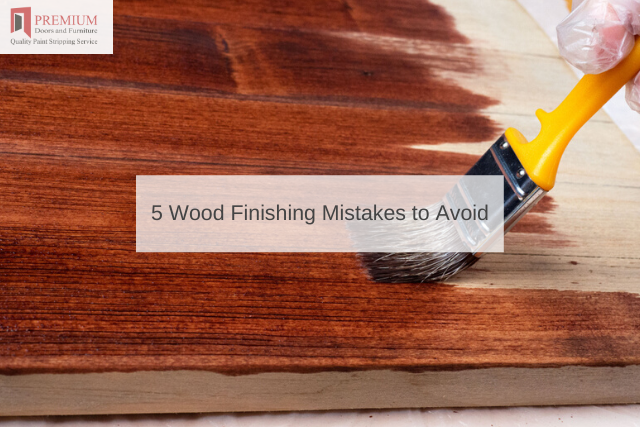 While finishing wood and wood products may sound relatively easy but is more often than not a tasking activity especially for beginners. Making any mistakes can be outright annoying and costly too and sometimes it can pose serious health concerns.
While finishing wood and wood products may sound relatively easy but is more often than not a tasking activity especially for beginners. Making any mistakes can be outright annoying and costly too and sometimes it can pose serious health concerns.
Mistakes in DIY wood projects are common thus it is important that you understand some of the few mistakes that you can avoid when finishing wood and its products. Here are some mistakes to avoid.
1 Choosing to manufacturer instructions
While you might have done some similar projects before and you basically know what to do, it is important to read the manufacturer’s instructions before going ahead to finish your project.
The manufacturer includes these instructions to help you know what products to use based on the chemicals and ingredients they used during production.
2 Not thoroughly furniture stripping
If our DIY project requires a bit of stripping, go ahead and do thorough furniture stripping. It is not uncommon to find homeowners stripping the old paint and then just partially finishing it.
This often leads to faded spots and botches. Make use of sandpaper or sander and ensure you sand it down to the bare wood first before anything else while watching out for any spots.
3 Not properly sanding your wood
Sanding is an important first step in preparing your wood for finishing. Analyse the type of wood you have to help you choose the grit of sandpaper you need for that project.
Coarse sandpaper on softwood is not advisable and so is using smooth sandpaper on coarse wood. Have the right sandpaper for your wood and sand your wood a minimum of two times while removing grit in between the sanding as you build up.
4 Failing to rub out
Not rubbing out your wood can possibly lead to a series of errors, unevenness and defects that with every coast of applied only leads to thick and bumpy coat that feels and looks ‘plasticky’.
Just learn to apply a few extra coats to your wood and sand it out with the right grit of sandpaper to enable you to remove any dust or irregularities. Finish the rubbing by a fine grit sandpaper the entire piece leaving a pleasantly done project.
5 Using incompatible products
If you don’t understand the type of products suitable for you project, it is necessary that you seek professional advice before you make some expensive mistakes.
For instance, dealing with oily tropical hardwoods can be quite challenging because of the antioxidants contained in the wood thus find a product that has a similar base solvent. Failing to do so will make your wood appear tacky and wet.



